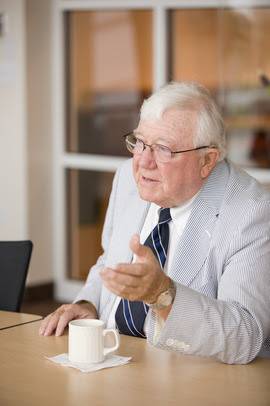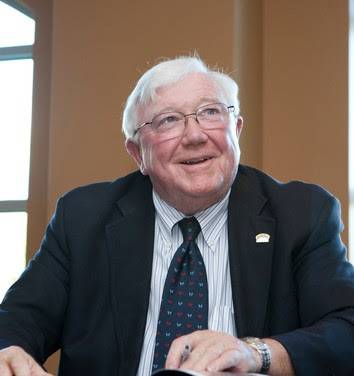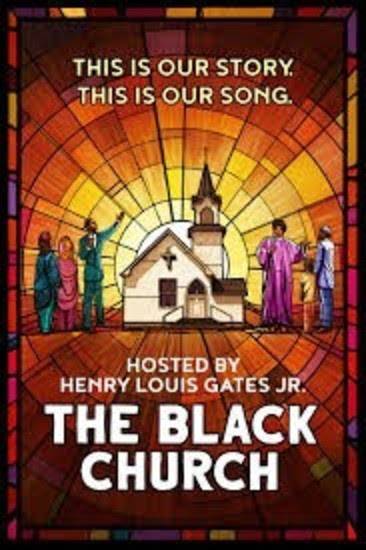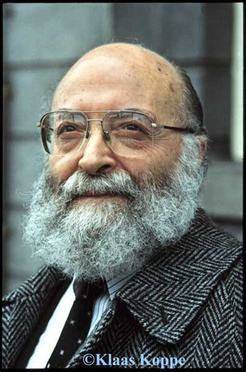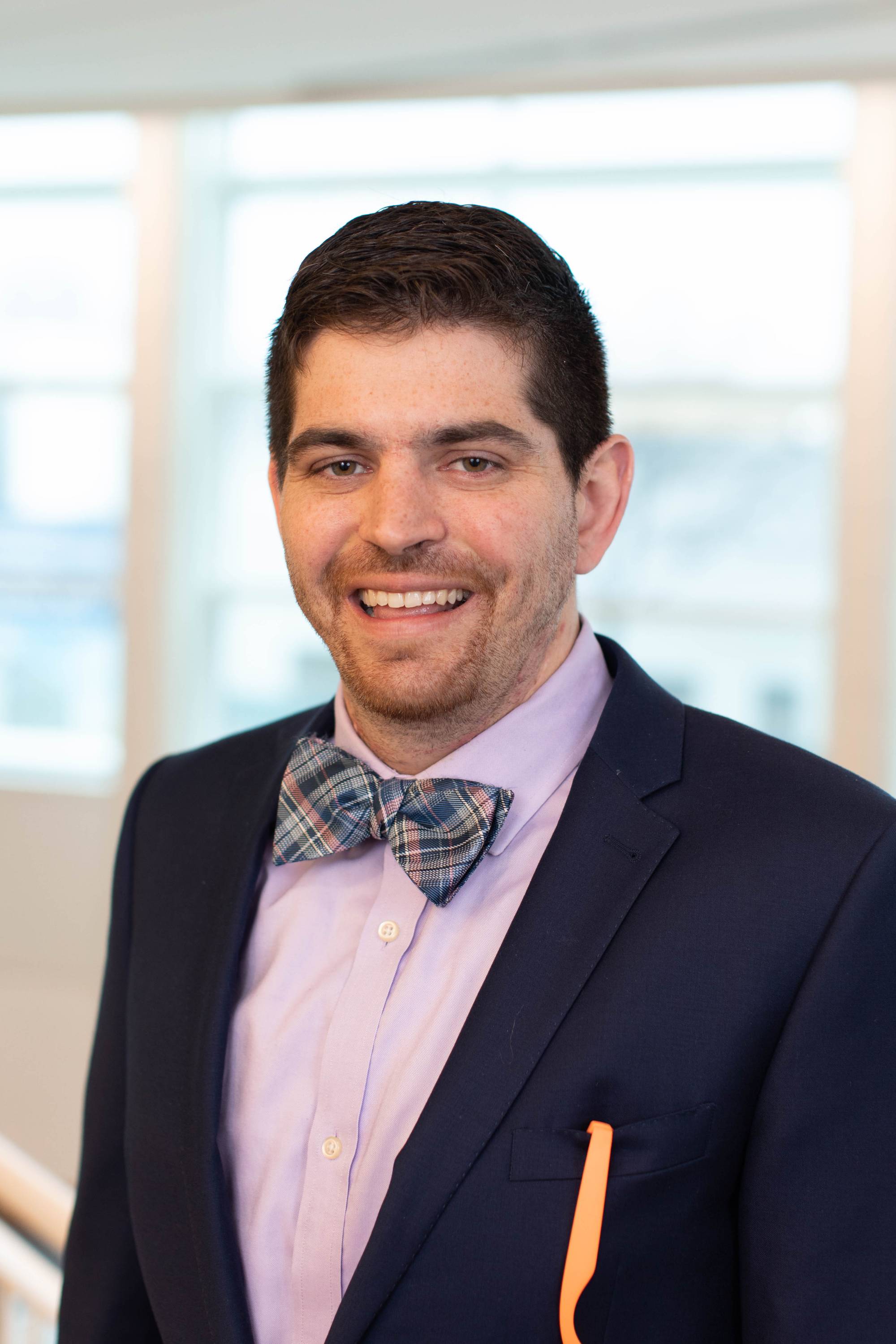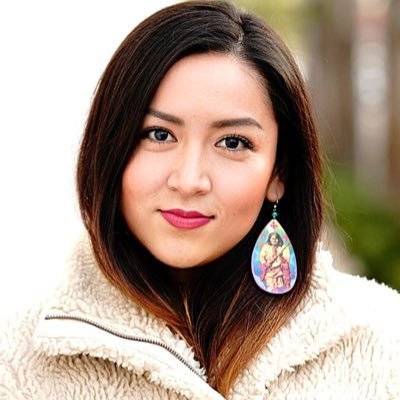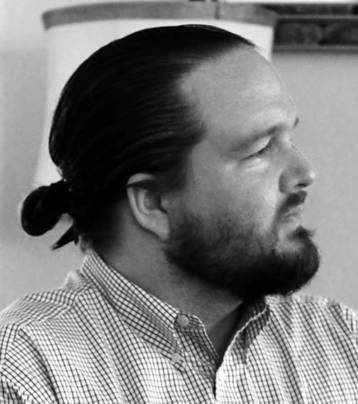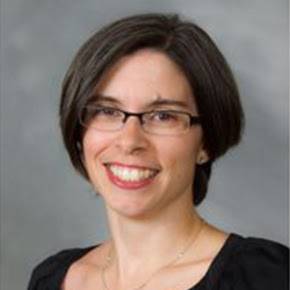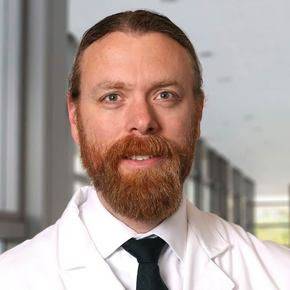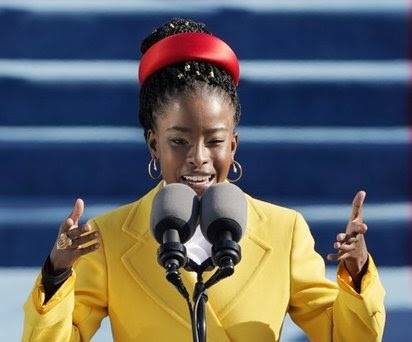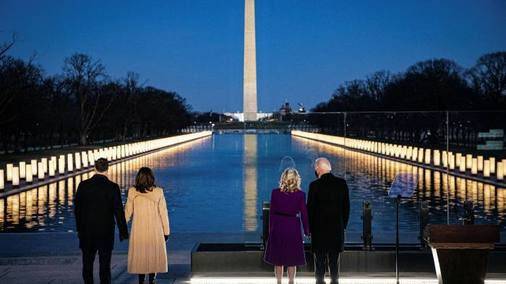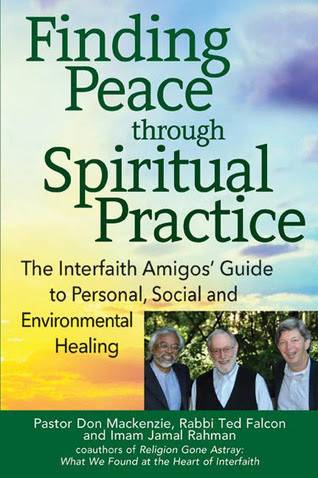Interfaith Insight - 2021
Permanent link for "Calibrating one's ego: relationships and religion" by Arend D. Lubbers on March 23, 2021
Introduction by Douglas Kindschi: Last week President Emeritus
Lubbers shared with us his reflection on his life and the importance
of calibrating one’s ego. He described the calibration process and
applied it to one’s ambition. (To read Part 1 click here.) This week he
continues to explore the need to calibrate in matters of personal
relationships and in understanding religion. He notes “I need to
write my thoughts when I reach a way station… This essay offers some
thoughts important to me on this late stage of my journey. Though
they deal with essential issues for me, they may not for others. We
are pilgrims on a life journey.”
Relationships
There is a hidden aspect of the ego undetected by those
expressing it. It is often found in marriages and other close personal
relationships. We fall in love, personally and physically attracted.
Usually such a state fulfills each individual’s immediate needs
without the awareness of the other’s deepest feelings, motivations, or
genetic or parental conditioning. Self-awareness in this instance does
not necessarily lead to care for the other even though thre is an
initial burst of affection. When the initial passion is banked,
individual needs and priorities often cause an emotional eruption or
simmering resentment. These problems are not the result of
overwhelming egos, but of egos taking care of themselves without
understanding for the other. If fortunate and capable of nurturing
this initial love into caring about the other’s self-fulfillment, a
balance of egos offers one of life’s happiest conditions. It takes
work and depends on the calibration of both egos to a degree that
meets their needs.
If a couple cannot reconcile their egos, our society offers
divorce and an opportunity to try again. There is, however, the
possibility of collateral damage with the divorce solution. Children
not yet capable of fully understanding what has happened suffer the
most. There can be a complex gathering of egos in a divorce situation.
The final effect on each person may take years to be determined. To
avoid divorce and its damage should be a priority, but may be an
impossible distance unless ego is understood and managed.
Have you ever watched a person enter a large room, survey those
assembled, and move directly to the one who is the most influential,
wealthiest and celebrated? My professional and social life has
afforded me the opportunity to observe such behavior many times. There
is similar group behavior at conventions and large institutional
meetings. Those who consider themselves the “in-group,” may be
considered so by others in attendance, gather in social situations and
exclude others from their conversations. This need to be important by
being with the important is one of the most transparent, bemusing,
sometimes hurtful experiences of self-aggrandizement.
The ego always needs to be fed, and to prove to yourself that you
are important is good nourishment.
Over the years I have watched intently as successful and
sometimes accomplished people attach themselves to another who has
gained high public acclaim, power, and wealth. They make themselves
useful, they flatter, they initiate engagements, and seek intimate
conversation. Their self-esteem requires the friendship and wants
others to know about it. By associating with power, they gain power.
Once the attachment is made, its protection is a priority. Sometimes
there is rivalry if another invades the territory. Usually the object,
the person of importance, enjoys the attention and offers enough
affirmation to the rivals to keep the peace.
This ego enhancement, especially among the already successful,
possesses no virtue except a modicum in the genuineness of the
friendship that may result. The foundation of the relationship,
however, is the need to associate with wealth and power, not
friendship. Does it reflect feelings of inferiority, superiority, or
both? I don’t know.
Ego feeding as I have described is completely self-centered.
There is no consideration of others when seeking it. Other
relationships will be sacrificed for it. It is a sacrifice of
self-esteem for a counterfeit self-esteem.
The United States Declaration of Independence claims all are
created equal. This truth is summoned out of the goodness in our
nature. We bring no feelings of superiority or inferiority to our
relationships with others or our understanding of human intercourse of
all peoples. We have no need to find importance in our associations,
only cooperation, empathy, and friendship. The life given to us is
important enough. Our egos are an essential part of that life. The
goodness given to us is the only useful tool available to calibrate
the ego’s uninhibited tendencies so that we may use it to express our
will in the best ways. Our inability to escape our individuality is a
dominant reality in our lives. We must take the blinders off our egos
and observe, evaluate, check, fulfill, and empathize when we can with
the ego of others. The right degree of self-esteem, ambition,
humility, and caring are essential in calibrating the process.
Religion
As the human species evolved, the practice of religion evolved.
Looking at the stars was enough to make humans aware that there was
something in the vastness of the sky beyond their knowledge. On earth
they were beset by many threats to their lives. In the search to know
how they should live, to seek protections from what nature could
inflict on them, and to learn how to manage the aggression that was
their natural disposition, religion emerged to help them.
Religion brought the revelation that God is love with its
implications to love others as you love yourself, and to forgive the
offenses against you. In my religion, Jesus is the messenger of that
love and redeems us by it. His gospel has been around long enough for
us to know that it works. When applied, it never seems to fail. But
too often it has not tamed the human ego. Instead the ego has its way
with religion. Why is that? The ego’s natural state is the search for
complete control. Control requires knowledge so all there is to know
about religion and its promises is made known to the self. This subtle
takeover of religion by the ego is undetected by those who fall victim
to it. They feel assured in the truth as they know it. Many of them
came to the truth through a dramatic experience. They are born again,
and feel that some similar experience to theirs is the only way to the
redeemed life. They are often partially right. Their lives take on a
more generous aspect. They can be bright, loving, and positive. Their
weakness is in their exclusivity. Theirs is the only way, the ego’s
way. It is subtle. The ego has a way of tricking those who own it. It
tricks them into making God in their image instead of the other way around.
A large number who observe this exclusivity turn away
from religious practice. The hypocrisy as they see it is too much.
They may or may not incorporate religious values in the way they live.
Then there are some who are loyal to a church, a shrinking number in
our society. Among the various people who want to live the goodness of
life, the revelation of universal love as an ego check and fulfillment
is their way to it.
The 20th century theologian, Reinhold Niebuhr, held that we come
closest to the truth in the paradox. For me the paradox is holding and
advocating beliefs while admitting their fallibility. Flooding life’s
paradoxes with love gives them sense and possibility. Humility is
inherent. Here is one of the most important of ego calibrations. Our
intellects and minds are given freedom to express with conviction. The
expression is tempered by our admission that we cannot claim God-like
knowledge to support them. While we act out, making experiences for
our lives and a place for our thoughts, we invoke and feel enveloped
by love, the spirit God has given to us. This is the way to unite our
self-awareness to that of others, so difficult, yet so redeeming if we
give it a try.
Permanent link for "Calibrating one's ego" by Arend D. Lubbers on March 16, 2021
Introduction by Douglas Kindschi: The President Emeritus at GVSU shared with me the following reflection on his life and the importance of calibrating one’s ego. For 25 of my 28 years as dean at Grand Valley, I had the privilege of working with Don Lubbers during his 32 years as president. I continue to consider him a friend and mentor. His advice and support on the Kaufman Advisory Board has been most valuable. It is my honor to share this piece as an Interfaith Insight.
Calibration is a scientific term used to describe the fixing, checking, or correcting the gradation of an instrument that measures something. To calibrate is to see that the object doing the measuring has the proper level or combination of what it needs to be effective or even function. If we allow ourselves to apply calibrating to human behavior, it leads to interesting speculations.
Probing the ego and consciousness itself offer ample opportunities. Ego is defined as the self: the individual as self-aware. The possibilities for self-awareness are limitless. Our self-awareness establishes our place in society and determines how we react to people and situations. The words derived from ego -- egocentric, egoistic, egotistic and egoism -- have negative connotations. In the evolution of the species’ self-awareness, not all has gone well.
The one positive derivative is ego-ideal, describing a healthy condition for those who are fortunate to have loving parents or parent substitutes. In our universe of the self-aware, it is admitted that not all is ideal. The fault lies in the individual’s attempt to exalt itself as a first priority and diminish others without concern. All points to self-awareness unchecked will lead to selfishness and self-infatuation.
Does that imply John Calvin got it right in propounding his doctrine of total depravity? Perfection eludes us all, yet there is a feeling of goodness in the ground of our being that under the right emotional and physical conditions can be summoned. If that goodness remains latent, we see self-centeredness and superiority flaunted by CEOs who win at money games, arrogant academics, controlling parents, amoral politicians, and disaffected racist followers of a demagogue. The latter group is the conglomeration of single egos coming together in the same cause only for selfish interests.
Both in ancient times and more recently the search for a society that allowed goodness to have a chance led to democracy. It’s messy and requires people to check their egos through compromise if they want to share in the pie that power has baked for them. It does not always work. The ego’s aggressive grab of power interferes, but egos can mix by modulating, as they should, for the good of all. Democracy is a complicated high form of social calibration.
In totalitarian societies self-awareness is held in check by autocrats. Survival dictates that boundaries be placed around self-expression. When some cannot be restrained, their expression is met with exclusion, imprisonment or death. Even then the ego bubbles up in a myriad of situations.
The reader may question the exploration of calibration as a concept to adjust ego. We know the effects of selfishness and unselfishness, of love and hate, of self-absorption and generosity of spirit. Isn’t seeking the better of these alternatives enough in the struggle to live the good life?
Over the years as my self-awareness sharpened from experience, reading, and contemplation, I began to think more deeply about the forces shaping my life. Fortunately for me, my parents’ love and nurture gave me an advantage when I began making choices about belief and profession. Though I followed in their train, thoughts about Jesus’ admonition that we be born again, born of the spirit, persisted.
We cannot ride along on the good and bad of our experience. Each ego must come to terms with itself. Avoidance only leads to trouble. Commitment to control the ego is personal and necessary if the right spirit is to prevail. Some make it with a high level of consciousness, others with more of a gut feeling. Where responsibilities for those with mental and environmental limitations rest is beyond the scope of my present thought.
For me, it has been an evolving process as I seek to understand and live the right kind of life. As I tried to manage ambition, relationships, and religion, the idea of calibration occurred to me. Though I think determinists have ideas worth consideration, I invoke my belief that there is a goodness dependent on us to summon. In the summoning, it is important to understand virtue and apply it correctly. I have observed what I believe to be the wrong dose of virtue bringing consequences that undermine it. For those of us who use our minds to think about issues I have described, we must find our own way.
Ambition
Though I never felt the pressure to succeed in a profession, it was assumed by me and all around me that I would. When professional success comes early the ego is not properly calibrated for it. Even when past teaching keeps one from boasting or prideful public demonstrations, the ego basks in personal satisfaction. The ego likes to take credit. Often, to a degree, credit is deserved. Yet if one has curiosity and interest in the pursuit of truth, revelations will come as thoughts move in the mind.
One conclusion is that individuals have not made themselves. They are given a genetic code not of their making and born into an environment not of their choosing. The implications for the ego are evident. How we think, how we perceive, what we do are shaped by factors before the assertions of the ego begin. The ego emerges along with those factors that create the human being.
When incorporating this understanding the successful individual takes satisfaction in achievement knowing that what took place before self-awareness is largely responsible for it. The individual does not seek to curb the ambition that drives towards success. If ambition does not consume the ego the time has come to use ambition correctly. To do this, the virtue of humility becomes an ingredient.
The right dosage is important. Too much may result in a life of denial of ambition and ongoing penance which is not necessarily useful in modern society. The right amount of humility does not discredit the satisfaction with what ambition has produced, and it directs ambition to include the welfare of others. This is the right calibration.
[Part 2 will continue next week as President Emeritus Lubbers reflects on relationships and religion.]
Posted on Permanent link for "Calibrating one's ego" by Arend D. Lubbers on March 16, 2021.
Permanent link for "The importance of details in communicating truth" by Doug Kindschi on March 9, 2021
Why does fiction open us up to a reality that we might not discover through other ways of communication? That was the topic of last week’s Insight and it bears further discussion. How is it that fiction can be the carrier of profound meaning and truth?
I believe that part of the reason is that fiction is built around telling a story and stories live through details. Last week I quoted a passage from Chaim Potok’s “The Chosen” that dealt with meaning in life; and yet in the novel prior to this passage, the author describes the setting leading up to Reuven’s discussion with his father. Potok writes, “I came back to my room and found my father standing in the doorway that led to his study. He had a bad cold and was wearing a woolen sweater and a scarf around his throat. This was his third cold in five months.”
What does standing in the doorway, wearing a woolen sweater, or having a scarf about one’s neck, have to do with the meaning of life? Is it important to tell us how many colds he had in exactly five months? It is these details that carry the story forward. A book of just “big statements” about the meaning of life, ultimate reality, the importance of justice and love, wouldn’t engage the reader or be inspiring. It is the details in the novel that bring the story to life and enable one to live inside this world and thus pay attention to its message.
Could it be that these so-called “big questions,” the really important truths, are so big that they need a “container” to hold them? Perhaps our finite minds cannot hold the fullness of reality without a mediating vehicle to hold them and enable us to transmit them. The genius of good fiction is that it gives us enough detail to enable us to comprehend bits and pieces of ultimate reality that relate to our everyday experience.
This relationship between big ideas and the details of story is also prominent in religious writings, even in our scriptures. Jewish scripture includes psalms or hymns, proverbs, and prophetic statements. But much of it is the telling of stories. It is the story of creation, of the flood, of the calling of Abraham to venture into a new land. We learn about the sibling rivalry of Cain and Abel, Isaac and Ishmael, Jacob and Esau, and then Joseph and his brothers. Whether they are literal histories can be debated, but good histories are not lists of chronological events or mere facts; they are presented in story form. They allow the reader to enter into that world and identify with the characters. The story of the exodus has such power that the center of the major holiday of Passover is the reciting of the story with the details regarding each item of food and drink in the Seder.
Those details are picked up by the Christian narratives in the telling of Jesus’ celebration of the Last Supper and the drama of the events of Holy Week between Palm Sunday and Easter. The details are important in remembering and telling of the message of God’s love. One could just talk in the abstract about love, truth, and justice, but it is carried best in the container of narrative. Jesus also used narrative when he told parables. He didn’t just talk abstractly about caring and love, he talked about a woman who had lost a coin, a shepherd who had a missing sheep, and a son who demanded his inheritance (basically wanting his father dead) and left home where “he squandered his property in loose living.” (Luke 15) Jesus taught what it meant to love your neighbor by telling the story of a man traveling from Jerusalem to Jericho who was robbed and left for dead. It was not a religious leader who stopped to help him, but a member of a despised minority, a Samaritan, who was “neighbor to him.” (Luke 10:29-37)
It is the details of the story that make the teaching come to life. Narrative stimulates the imagination and becomes the container for the values that all religions teach. Religious narrative communicates eternal principles and values with specific persons, places, and times. It is sometimes called the “scandal of particularity.” Why would God pick someone like Moses fleeing Egypt from a murder charge, admitting that he was “slow to speech and needing his brother’s help, to lead His people from slavery to freedom? That narrative is so powerful that it became the theme and inspiration some 3,000 years later for the civil rights movement in America.
Narrative has power to contain the big ideas that can motivate individuals as well as movements for justice. Discussing values in the abstract is difficult, if not impossible, to communicate to the next generation. Beliefs and truths in the abstract often just lead to debate. We need to read the narratives in our religious heritage as well as hear each other’s stories in order to find understanding and acceptance.
The recent PBS four-hour series on “The Black Church” is written and narrated by Henry Louis Gates Jr., historian, literary critic, filmmaker, and professor at Harvard University, where he serves as director of the Center for African and African American Research. The series explores the roots of African American religion, its role supporting the move from slavery to emancipation, and role in dealing with the Jim Crow era and the civil rights movement. The stories and interviews provide the particularity of those experiences that no academic study of racism or structural racism could ever achieve. It brings narrative and details to this “big issue” of today. It is no accident that the full title of the series is, “The Black Church: This Is Our Story, This Is Our Song.”
Histories and novels need detail and particularity to communicate powerful ideas and values. Let us keep telling our stories and learn from the stories of others. It might just lead us to sing our song together.
Permanent link for "Finding reality through fiction" by Doug Kindschi on March 2, 2021
I learn things about reality by reading novels that I could never understand by just reading non-fiction. I knew almost nothing about the world of Hasidic Judaism prior to reading the novels of Chaim Potok. But I also didn’t know things about myself until I read Potok. How is it that what is not factual can be so powerfully true?
Of course, I could learn about Hasidic Judaism by reading non-fiction. I could Google the topic, read Wikipedia and other presumably factual sources, but I wouldn’t get a hint about what it would be like to be a Hasidic Jew. I don’t know what might be going on8 in the mind of such a person. I can’t even see inside the mind of people I know, colleagues I work with, and even those close to me that I live with. But fiction can take me inside the mind of the characters depicted.
Reading Potok’s “My Name is Asher Lev” takes me inside the mind and thinking of an adolescent who has an incredible artistic talent that puts him in conflict with his family and conservative Orthodox community. As a young child he was drawn to art and painting prohibited by his community. While his father thinks he will outgrow it, he doesn’t, and the impulse grows even stronger. He tells his Orthodox father that he can’t help painting. His father responds: “only animals cannot help what they do. People have a will to direct their lives,” to which Asher replies that it is his will that makes him want to draw. I am drawn not only into the inner thoughts of this young person but also into conversations that I would never experience in my “real world.”
And yet, when I first read the Asher Lev book, I was also a young person struggling to resolve issues I had growing up in a very conservative, restrictive, fundamentalist Christian community. I could learn through the eyes of this young Hasidic Jew in ways that helped me resolve some of my issues. I could relate to his inner thoughts as well as to the conversations he had. It was fiction, but it informed my reality and personal issues that I faced. The novel was not factual, but for me it was true.
Potok’s first novel “The Chosen” tells the story of two young Jewish boys, one Hasidic and the other Orthodox, but more progressive. Danny Saunders’ father is the rabbi leader of a small Hasidic congregation that left Russia under his leadership to escape persecution. Reb Saunders led this small group, as had his father before him, and leadership of which his son Danny was expected to follow.
Danny, while feeling the pressure and expectation for his future, was more interested in studying psychology and understanding the workings of the mind. He became friends with another Jewish boy, Reuven Malter, who lived nearby in Brooklyn but culturally in a very different and more modern world. Reuven’s father, a professor and Torah scholar, was open to the larger world with a more liberal understanding of his faith and scripture.
The interactions of these two young men with their fathers gave me insight into my own relationship with my father, and an appreciation of how my father had encouraged my own development and exploration outside my very restrictive religious community. Again, fiction came to my aid and brought truth to my own development. I recently read “The Chosen” again and watched the 1981 movie based on the novel.
Insight into meaning, life, and how to deal with differences can also be learned from fiction. In a discussion with his son, Reuven’s father compares a human life span to “the time it takes to blink an eye, if we measure our lives against eternity.” But he continues, “a blink of eye in itself is nothing. But the eye that blinks, that is something. A span of life is nothing. But the man who lives that span, he is something. He can fill that tiny span with meaning, so its quality is immeasurable though its quantity may be insignificant. … A life filled with meaning is worthy of rest. I want to be worthy of rest when I am no longer here.”
At a much later stage in life, now many decades later, I return to this work of fiction to gain insight into what life is all about, its meaning and its truth. It informs a deeper sense of reality that the day-to-day facts of living and aging do not always reveal.
In today’s world of conflict and polarization, the novel illumines another important lesson. Reuven becomes very upset with the way Rabbi Saunders is treating his son Danny and share this with his father. Reuven’s father defends Danny’s father even though he also disagrees with much of what he says and does. He notes that it was the faith of Jews like Reb Saunders that “kept us alive through two thousand years of violent persecution. He disagreed with Reb Saunders, yes, but he would countenance no slander against his name or his position. Ideas should be fought with ideas, my father said, not with blind passion.”
Can we affirm the faith of those who do not believe as we do, even as we disagree? Can we find a truth that is deeper than the details of our differing narratives?
Another powerful form of fiction in today’s world can be found in movies. Film critic Roger Ebert noted this when he wrote, “Movies are the most powerful empathy machine in all the arts. When I go to a great movie I can live somebody else's life for a while. I can walk in somebody else's shoes. I can see what it feels like to be a member of a different gender, a different race, a different economic class, to live in a different time, to have a different belief. The great movies enlarge us, they civilize us, they make us more decent people.”
Today we need the truth as well as the empathy that can be mediated through various forms of fiction. Let us be open to coming together and even learning from fiction to be better people with empathy and openness to differences as we seek a larger truth.
Posted on Permanent link for "Finding reality through fiction" by Doug Kindschi on March 2, 2021.
Permanent link for "Protecting the sacred: Native American activists speak out" by Kevin McIntosh on February 23, 2021
Bless the mouth, lips and speech of this land, for the land is a speaker, a singer, a keeper of all that happens here, on this land…
Bless the arms and hands of this land, for they remake and restore beauty in this land
These stanzas from Joy Harjo’s “Bless this Land” remind us of the
beauty of the earth and for those who hold our stories. Harjo is our
current national Poet Laureate and is the first ever Native American
to have that position. Harjo’s appointment and work reminds us of the
long history and culture of Native Americans that started in this land
a long time before “Columbus Sailed the Ocean Blue.” Her work invites
us to reeducate many Americans on what being Indigenous means.
That is the also the work of our 2021 Interfaith Leadership
Lecture speaker Allie Young. Young is a member of the Diné (Navajo)
Nation in New Mexico. She is a storyteller and writer on a mission to
increase authentic representation of Native Americans in TV, film, and
mainstream media by sharing the stories and traditions of her people –
stories that helped and continue to help them persevere in a world
where they are largely invisible, underrepresented, and misrepresented.
She is a writer helping to empower the next generation of Native
Americans to help move us all away from caricatures to fully developed
native characters. Young saw firsthand how Hollywood still
misrepresents Native Americans on the silver screen when she walked
off the set of a movie after learning the names given to the
characters in the movie.
When COVID-19 struck, Allie rushed back home to the Navajo Nation
in order to help spread awareness about the deadly virus. When she
returned home, she quickly saw the devastating impact of the virus.
By May, the Navajo Nation had the highest per-capita infection rate in
the United States. Allie knew she wanted to help. In the Native
tradition the elders (those most at risk from this virus) are the
holders of stories, languages, and so much more. As she writes, “for
my community and others like it, much more than death was at stake:
all that we hold sacred hung in the balance.”
Reflection Question: How do we treat those things
that we consider sacred? It might be in not depicting the Prophet
Muhammad or in serving everyone a Langar meal when they enter your
sacred space. There might be other nonreligious things that we hold
sacred, things that we hold up or make sure we protect.
Allie started to work on a public health campaign to help curb
the disease. When she was asked if she could help, she quickly
responded, “This felt like a glimpse of hózhó (beauty and balance) –
an opportunity to help change the trajectory of the virus in Navajo
Nation.” She worked to enlist young Diné people in the fight against
COVID-19. Empowering the next generation, she told stories about why
native elders were important and allowed Navajo youth to show their
own culture through Native graduation ceremonies. She pushed Native
youth to protect their land and protect their elders, just as their
ancestors did for them. At the end of these challenges, she had over
500 youth participate in her projects.
Reflection Question: How do we empower our youth?
Do we help them see their ancestry as something to cherish and be
proud of, help them see that they are part of a larger part and
teach them how to be advocates and allies?
Allie is also a bridge builder. Recognizing the importance of
allies, she reached out to Mark Ruffalo and other celebrities in order
to boost her voice. She knew that the Native community would feel
seen if The Hulk, Ant Man, or Luke Skywalker (Mark Ruffalo, Paul Rudd,
Mark Hamill) celebrated them as well. Allie continues to call on
allies to help broadcast the plight of the Navajo Nation during the
COVID pandemic, and in helping them get PPE, vaccines, and other
medical supplies to tribes all across America. Because of these
videos and calls for help, Allie was able to get over 30,000 people to
view her website and was able to recruit 50 medical volunteers to help
those in the Navajo Nation.
Reflection Question: How do we make bridges across
difference? To paraphrase Eboo Patel, president of
the Interfaith Youth Core, how do we make our bridges stronger than
the rocks people throw to try and break them? How will we reach out
to our neighbor or friend and realize that our liberation is wrapped
up in their liberation?
Allie continues to tie her activism into the sacredness of the
Navajo people and land. Looking at voting data, Allie recognized that
many Diné people weren’t voting. Polling places weren’t close,
portions of the Navajo Nation lack electricity, and the roads could be
difficult to travel. Allie organized a 10-mile “ride to the polls”
event. She also encouraged fellow Diné people to get on horseback and
ride to the polls. She did so in order to honor their ancestors who
fought for the right to vote as well as those who perished from COVID
and couldn’t vote in the 2020 election. She said in an interview with
Native News Online that she is most proud that “my spirituality and
culture are at the core of everything I do and manifest in all of my work.”
Reflection Question: How does our spirituality
impact our social justice and advocacy? How can we continue to act
justly and to love mercy? How will we continue to protect those who
are sacred to us?
May we continue to care for those who guard our stories and
traditions. May we empower our youth to be proud of their culture and
work to get their voices heard.
You can hear more about Allie Young and her work at our
online Interfaith Leadership Lecture Tuesday, March 9.
Permanent link for "Religious belief and medical decision making" by Jeffrey Byrnes on February 16, 2021
If you are facing a significant health episode and believe God will
perform a miracle, is it OK for you to ignore established medical
science? Is it OK for the medical team to just do what they know is
best and ignore your beliefs? The DeVos Medical Ethics Colloquy and
the associated West Michigan Medical Ethics Conference will host
events on Monday, Feb. 22 that will address the role of the patient’s
religion in making decisions about medical care. The aim of the event
is to help health care workers and community participants better
understand the challenges of engaging with a
patient’s religious beliefs when making decisions — even when these
beliefs are shared, but in particular when they are not.
People are sometimes genuinely surprised to find out many health
care decisions are not made on the basis of medical science. That
claim is not intended as a general attack on contemporary health care.
Rather, that claim is simply a reminder of the diversity of
determinations that are made in health care.
On one hand, many determinations are, in fact, made on the basis
of medical science. Determinations about whether a patient is COVID
positive, at risk of a heart attack, or cancer-free — the kinds of
determinations that we typically think of going into a hospital — are
all made with the tools, training, and methods of medical science.
On the other hand, consider a scenario in which a patient of a
certain age has had a long fight with a disease and is told by his
doctor that the available treatments are no longer helping. She tells
the patient that medical science has determined that the best
remaining chance to prolong his life is a complicated and risky
surgery. The remaining decision is this: should the patient undergo
the surgery in an effort to prolong his life?
The answer to this question is not determined on the basis of
medical science. Importantly, the “should I do this?” question is
hardly less frequent than the kind of medical determinations that we
typically think of as going on inside a hospital. For very nearly all
medically advised treatments must be paired with a non-medical
decision about whether to consent to that treatment.
To say that the question, “should the patient consent to the
risky surgery?” is not a medical question, is simply to say that no
part of the physician’s medical school training can serve as the basis
for deciding whether a particular patient should undergo the
procedure. Yet we do not view this as a gap in the physician’s medical
education, simply because we don’t think of the consent question as
the physician’s to make in the first place. The decision to consent,
we feel, rests firmly on the shoulders of the patient alone. In this,
determinations about what a patient should do are very different from
determinations about what is medically appropriate.
One way of labeling the difference between medical decisions and
decisions about what a patient should do is to say that medical
decisions are based on facts, while decisions about what a patient
should do are based on opinion. Understanding the kinds of decisions
that are made in health care will require us to think about the kinds
of decisions that we make in a different way.
Some decisions, like choosing a particular flavor of ice cream,
are preferences that do not, all things considered, matter that much
to us. If a friend encouraged us to try a different flavor, we might
take her up on that or we might stick to our original decision, but we
probably wouldn’t consider it an issue about which to argue. On the
other hand, if you calculate a 20 percent tip for a dinner bill and a
friend tells you that you have made a mistake, that would be a
difference of fact for which there is a right answer, not just a
difference of opinion. Now consider the decision to accept or refuse
the wine or meat. Are those decisions more like choosing a scoop of
ice cream or more like calculating the tip?
For some people, drinking alcohol, eating meat — or eating
certain kinds of meat — are neither decisions based on objective fact,
nor decisions one would choose differently like ordering ice cream.
For some, deciding to accept the drink or food would be informed by
the decider’s religious beliefs. Religious beliefs are not the kinds
of things which we presume to be shared in a pluralistic society, but
they are also not the kinds of things that can be easily changed
without cost.
Many of the decisions that patients face when receiving health
care require them to reflect upon their bodies, their priorities,
their fears, and even their own mortality. Therefore it is not a
surprise that religious patients will make the relevant decisions on
the basis of their religious beliefs. Often, these
religiously informed decisions do not pose any particular problem for
those involved. But, occasionally, strife arises in a health care
setting because caregivers do not appreciate the role
that religious beliefs play in a patient’s decisions.
Without that understanding a health care worker might be inclined
to treat the patient’s religiously informed decision as a mere
statement of preference, like choosing an ice cream flavor.
Alternately, a physician might think that the treatment being offered
to a patient clearly follows from a set of shared commitments, just
like the solution to a math problem. In either case, the health care
worker might be inclined to push back against the patient’s decision.
When the treatment decision is a matter of life and death or involves
a child, then the patient is even more likely to face pushback.
The task of the expert presenters of the conference and colloquy
event will be to help attendees recognize, understand, and respect the
character of religiously based health care decisions. This will
include asking the experts to wrestle with the question of when and if
it is ever appropriate to push back on a decision based on a
patient’s religious beliefs. It will prove to be enlightening as we
all, both the health professionals and clients, face such issues. Join
us!
Permanent link for "Interfaith opportunities and challenges in the health community" by Doug Kindschi on February 9, 2021
As our community and nation become more diverse, we all have the
opportunity to learn and affirm the value of our expanded worldview.
For many of us it was international travel that introduced us to this
bigger world. Sponsoring international students can also be an
enriching experience of bringing the wider world into our own homes.
Even look at our eating habits. I remember many decades ago when I had
my first taste of that “new” food called pizza. Consider the rich
variety of cuisine that we now take for granted. Yes, diversity brings
many wonderful opportunities for learning and developing new friends
and relationships.
Diversity can also bring challenges as different beliefs present
decisions that as a society we didn’t previously have to face. Health
care is one arena where such issues frequently emerge. It is a
critical field where important contributions come from increasing
diversity. Immigrants and foreign-born professionals play a vital
role in the health care community. They also represent much of
the religious diversity as well.
For example, in Michigan, with less than a 3% Muslim population,
15% of the medical doctors in the state are Muslim. Furthermore, they
have also made many vital contributions to science and the practice of
medicine. Nationally, over one-quarter of the medical doctors are
foreign trained and in certain areas like geriatrics, they comprise
more than 50% of the field. Immigrant doctors are also more likely to
serve in areas of greater poverty. Recent studies have shown that over
20 million Americans live in areas where over half of the doctors are
foreign trained.
It is clear that immigrants and foreign-trained doctors fill
important health care needs in many underprivileged areas of our
country. They contribute not only to our increased diversity but in
vital ways contribute to our overall health system.
This is also true of the broader health team with increased
diversity among nurses contributing in major ways to hospitals and
long-term care facilities. Immigrants account for nearly one-quarter
of the work force in long-term care facilities and perhaps even more
in individual care arenas. Immigration is critical to the health and
care of the increasing numbers of elderly as well as disabled Americans.
Diversity in these areas also brings, in addition to tangible
contributions, an opportunity to learn about the rich variety of
cultures in our world. Religious diversity also broadens our
appreciation of the many expressions of spirituality. As we interact,
we have the opportunity to go deeper in our own religious faith and
challenge some of our simplistic assumptions.
Additionally, religious pluralism in the health fields gives us
an expanded understanding of differing values and practices that can
bring challenges as well. The West Michigan Medical Ethics Conference
coming up later this month explores some of these issues as it
addresses the theme, “Waiting for a Miracle: The Role of Religion in a
Patient’s Decision Making.”
One of the issues deals with end-of-life concerns, a topic
explored the past two weeks in the Ethics & Religion column that
appears in the Religion section of The Grand Rapids Press. The
organizer of that column, Rabbi David Krishef, is also a member of
the interfaith panel for the conference. The panel will also include
persons from the Muslim and Hindu faiths as well as Christian
ministers, both Catholic and Protestant. These
different faith traditions will help us learn the various perspectives
and be enriched.
Many other topics will be explored, from how dietary restrictions
can be accommodated to the use of vaccines and the appropriate use of
medications to relieve suffering. Different traditions will bring
perspectives that will be helpful to health care workers as well as to
the rest of us who might be dealing with similar challenges. These are
ethical issues that also become practical in the health care setting.
The afternoon session will include presentations from
philosophical/ethics professionals and from those working in hospitals
in the area of spiritual care.
The evening DeVos Medical Ethics Colloquy will address the theme,
“The Role of Religion in Health Care.” We will hear from two
nationally respected directors of university bioethics centers.
Ana Iltis, Ph.D. is a professor of philosophy and director of the
Center for Bioethics, Health and Society at Wake Forest University in
North Carolina. She is the president of the American Society for
Bioethics and Humanities and serves editorial roles in both The
Journal of Medicine and Philosophy and the Annals of Bioethics book series.
Ryan Nash, M.D. is the director of the Ohio State University
Center for Bioethics. He has a faculty appointment in the Department
of Internal Medicine with ongoing clinical work in the Department of
Palliative Medicine. He serves on the editorial boards of The Journal
of Medicine and Philosophy and Christian Bioethics. Dr. Nash is
certified by the American Board of Internal Medicine in internal
medicine and in hospice and palliative medicine.
The conference and colloquy are organized by the Vice Provost
Office for Health at Grand Valley State University. The
Kaufman Interfaith Institute is pleased to collaborate with them as a
part of our 2021 – Year of Interfaith Healing. More information about
this is also available on our website.
You are welcome to join doctors, nurses, social workers, and
other health professionals as well as members of the community for
these important learning events. Community participation is free, but
registration is required. Further information and registration link
is available at our website. We hope you will be able to join us.
Permanent link for "Coming together, signs of hope" by Doug Kindschi on February 2, 2021
“When day comes we ask ourselves,
where can we find light in
this never-ending shade?”
So begins the poem read at last month’s inauguration by the
22-year old Amanda Gorman that captured the nation’s imagination. She continued:
“And yet the dawn is ours
before we knew it
Somehow we do
it
Somehow we've weathered and witnessed
a nation that isn’t
broken
but simply unfinished.”
Can we “find light in this never-ending shade” that for many has
become the darkest midnight?
Can we come together to repair and
heal a nation whose work is “unfinished?”
Hope alone is not enough. We must also face the failures and
divisions of the present and past. It begins with the greatest
pandemic in over 100 years. This past year was “the year global health
went local,” wrote Bill and Melinda Gates in their annual foundation
letter. They described the world that has been connected by a network
of germs and microscopic particles that “like it or not” brings us all together.
While the virus does not recognize country borders or political
parties, it does not affect everyone equally. The Gates letter notes
that the COVID virus exposed pre-existing inequalities, gaps that were
always there, “but we just didn’t want to see them.” Their letter
continues, “People with less are faring worse than those with more.
Essential workers are facing greater risks than those who can work
from home. Students without internet access are falling behind
students who are learning remotely. In the United States, communities
of color are more likely to get sick and die than other Americans.”
Black Americans are reported to be three times as likely to get the
COVID virus as whites, and they as well as other minorities have less
access to testing and the vaccines.
The Gates letter doesn’t give up hope but sees “an important
opportunity to turn the hard-won lessons of this pandemic into a
healthier, more equal future for all.” They do recognize that this
will likely not be our last pandemic challenge. They write, “We don’t
know when the next one will strike, or whether it will be a flu, a
coronavirus, or some new disease we’ve never seen before. But what we
do know is that we can’t afford to be caught flat-footed again. The
threat of the next pandemic will always be hanging over our heads —
unless the world takes steps to prevent it.”
Recent political division also contributes to racial disparity
and even racial and religious bigotry. The recent attack on the U.S.
Capitol revealed again increased anti-Semitism in our country. The
shocking images from that attack included pictures of someone wearing
a Camp Auschwitz shirt and another wearing a reference to “six million
was not enough,” both references to the Nazi extermination camp and
the millions murdered during the Holocaust. This is only the latest
example of the long history of connections between white supremacist
groups in America and anti-Semitism and pro-Nazi ideas. Last week was
the International Holocaust Remembrance Day marking the anniversary of
the liberation of Auschwitz on Jan. 27, 1945.
That insurgency attack was not only an affront to Jews, but also
to Christians who were offended by the unholy mixture of references to
Jesus by the violent crowd. Sr. Christine Schenk, who worked for 20
years as a nurse midwife and is now a columnist for the National
Catholic Reporter, wrote of her alarm about the Jesus flags and
frequent references to Jesus as they stormed the Capitol. She wrote,
“I could barely take in that this was happening at the citadel of my
country’s democracy — let alone that the perpetrators would justify
their violent behavior by invoking the name of the Prince of Peace.”
Sr. Christine called for civic communities to join with
communities of faith and religious leaders to condemn the violence and
“work to end the rampant rage and division that have overpowered our
nation.” She offered this prayer:
“Grant us, O God,
A vision of your world as your love would have it:
A world where the weak are protected, and none go hungry or poor.
A world where the riches of creations are honored and shared so
everyone might enjoy them.
A world where different races, cultures and creeds live in peace
and harmony, with equal regard.
A world where peace is built with justice and justice is guided
by love.”
The Sister’s professional career, combining health care with
her religious commitment, reminds us of the important connection
between these two aspects of building a healthy community. It is also
a reminder of the two events dealing with religion and health coming
up later this month on Feb. 22, offered in conjunction with the Office
of Vice Provost for Health at Grand Valley State University. (See
infobox for details.)
Returning to the Inauguration poem by Amanda Gorman, she
referenced the passage from the Hebrew prophet Micah, asking us to
envision the day that “everyone shall sit under their own vine and fig
tree. And no one shall make them afraid.” It is the same passage that
President George Washington referred to in 1790 when writing to the
Jewish community in Newport, R.I. They had expressed concern about
whether in the new nation Jews would be safe and respected. Let us
claim that promise from Washington and the vision from Gorman.
Her poem concludes:
“It's because being American is more than a pride we inherit,
it’s the past we step into
and how we repair it…
our people diverse and beautiful will emerge,
battered and
beautiful
When day comes we step out of the shade,
aflame
and unafraid
The new dawn blooms as we free it
For there is
always light,
if only we’re brave enough to see it
If only
we’re brave enough to be it
Posted on Permanent link for "Coming together, signs of hope" by Doug Kindschi on February 2, 2021.
Permanent link for "A time for healing - finding amazing grace" by Doug Kindschi on January 26, 2021
Last week included a very moving ceremony in Washington, D.C.
remembering the over 400,000 lives lost in less than a year due to the
COVID virus. The evening prior to the inauguration, the
president-elect and vice president-elect stood in front of the
reflecting pond outside of the Lincoln Memorial to recognize those who
have died because of the virus. Four hundred pillars of light
reflected into the water as we were asked to reflect on this terrible
loss of lives. It is hard to grasp the enormity of the impact of the
pandemic. More American lives have been lost to COVID in the past 10
months than in the four years of the U.S. involvement in World War II.
Daily deaths of 3,000 to 4,000 are equivalent to 10 or more 737s
crashing every day. Yes, we need healing for our bodies!
The event between the Lincoln Memorial and the reflecting pond
began with a message from Cardinal Wilton Gregory, archbishop of
Washington and first African American to be elevated to rank of
cardinal. He began, "At this twilight hour, our beloved nation
pauses to remember and to pray for the many thousands of people who
have died from the coronavirus in this past year. … This virus, more
than taking the lives of too many of our citizens as well as people
around the globe, has left in its wake a sobering awareness that we
are all united in the sorrow that we recognize today."
He prayed also for the families and relatives “who had to
surrender their loved ones without the comfort and the consolation
ritual of a funeral." Cardinal Gregory continued expressing
gratitude for those who have cared for those stricken with the virus
and for their families, saying “our sorrow unites us to one another as
single people with compassionate hearts. May our prayers strengthen
our awareness of our common humanity and national unity.”
One of those who has cared for the patients and families is a
nurse from near Detroit who would often sing between shifts on the
hospital floor in the COVID unit. Lori Marie Key was introduced to
sing the same song she frequently sang in the hospital, “Amazing Grace.”
"Working as a COVID nurse was heartbreaking," Key said
before singing. "It was heartbreaking for the patients who are
sick, it was heartbreaking for the families who couldn't be there with
them, and it was heartbreaking for those caring for them.”
"But when I'm at work, I sing," Key added. "It
gives me strength during difficult times and I believe it helps
heal." Yes, we need healing for our bodies, for families and
loved ones, and for those caring for them.
The song she sang has a long history going back to the 1700s when
the Englishman, atheist, and slave trader John Newton
found faith after surviving a storm at sea. He became an Anglican
priest and vocal abolitionist as well as one who wrote some 280 hymns
in addition to “Amazing Grace.” It has become a standard at funerals
and memorials, including the moving version sung by former President
Barack Obama at the 2015 memorial service honoring those killed in the
African Methodist Episcopal church in Charleston, SC. He wasn’t the
first president to turn to this hymn at critical times in our history.
President Jimmy Carter joined with Willie Nelson to sing it. President
Ronald Reagan’s funeral included a performance, and it was played on a
single bagpipe at President Gerald Ford’s funeral.
The loss of lives to this deadly virus also occurs at a time of
another kind of virus, that of political division. While we mourn the
400,000 lives lost, Washington, D.C. was locked down because of the
polarization that just two weeks earlier had led to the violent
assault on the Capitol Building with further loss of life. Yes, we
need healing for the political polarization!
The Kaufman Interfaith Institute earlier anounced the “2021—Year
of Interfaith Healing.” Our mission is to
promote interfaith understanding and acceptance. An important aspect
of the effort is working together beyond just understanding to
addressing common problems in our broken world. The Jewish concept of
“tikkun olam,” or “repairing the world,” is a call to be active
participants in righting the wrongs and healing the problems that we
face in our world. It is also important in other religions as well.
In the Christian Gospels, Jesus, in a parable, calls his followers to
bring healing by feeding the hungry, clothing the naked, visiting
those in prison, and welcoming the stranger. (Matthew 25)
During our Year of Interfaith Healing we will also address the
topics of healing our earth and healing our racial disparity. All of
these issues are connected and are exacerbated by the coronavirus pandemic.
Coming up next month we are working on two connected events in
collaboration with the Office of Vice Provost for Health at Grand
Valley State University. In the afternoon of Feb. 22, the West
Michigan Medical Ethics Conference theme is “Waiting for a Miracle:
The Role of Religion in a Patient's Decision-Making.” The conference
begins at 2 p.m. and includes presentations by ethicists, spiritual
care professionals, and an interfaith panel.
That same evening, the DeVos Medical Ethics Colloquy session
begins at 6 p.m. with the theme, “The Role of Religion in Health
Care.” The featured speakers include Ana S. Iltis, Ph.D., director of
the Center for Bioethics, Health and Society at Wake Forest
University; and Ryan Nash, M.D., director of the Center for Bioethics
at Ohio State University. Following each presentation will be a time
for questions and responses. Further information for registration for
one or both of these events can be obtained at www.InterfaithUnderstanding.org.
As we proceed through this Year of Healing, let us each find ways
to demonstrate the amazing grace that brings us to caring for our
fellow human beings.
Posted on Permanent link for "A time for healing - finding amazing grace" by Doug Kindschi on January 26, 2021.
Permanent link for "Spiritual responses to polarization" by Doug Kindschi on January 19, 2021
How can we respond to polarization in our communities and in our
nation? Last week’s New York Times column by David Brooks identified
the polarization not only in religious communities generally, but
specifically in the white evangelical churches. It is so sad to see
political polarization and strife infect our society right down to
families and religious congregations. When a church community that
preaches love and forgiveness descends to cursing, nastiness, and even
death threats, we must all be concerned.
Are there spiritual practices that can help us in these times?
Five years ago, the book “Finding Peace through Spiritual Practice”
offers, as its subtitle suggests, a “Guide to Personal, Social, and
Environmental Healing.” The three authors, a Jewish rabbi, a
Christian pastor, and a Muslim imam, have since the 9/11 tragedy been
working together to provide perspective and hope that seeks “an inner
place of reconciliation of opposites and awakening to the reality of peace.”
They begin by identifying the inner spiritual life as not the
opposite of social action and compassion in the larger world. It is,
in fact, a critical first step. “Spirituality demands action,” they
write. “We all want greater peace, and that requires both inner and
outer action.”
While peace strives for the absence of violence, it is sometimes
also defined as the absence of conflict and fear. They suggest, to
the contrary, that conflict when properly managed often leads to
positive change and growth. Absence of fear would endanger our safety.
It would be harmful to ignore the fear of the hot stove or the fear of
a highly contagious virus. They define true peace as “a way of living
in which our conflicts lead us to more meaningful relationships, fear
awakens us to live with greater safety, and pain reminds us of where
we need support. Peace is an environment in which we help each other
become the very best we can be.”
They identify polarization as our basic challenge, not just
externally in the public arena, but also in our personal lives. Our
human makeup, they write, “permits, promotes, and even perpetuates the
pain we bring on ourselves and each other,” while at the same time “is
also responsible for the compassion, love, and peace in our lives.”
The Russian dissident and author, Aleksandr Solzhenitsyn, points
out the conflict. “If only it were all so simple! If only there were
evil people somewhere insidiously committing evil deeds, and it were
necessary only to separate them from the rest of us and destroy them.
But the line dividing good and evil cuts through the heart of every
human being. And who is willing to destroy a piece of his own heart?”
The book’s Jewish co-author, Rabbi Ted Falcon, notes that the
creation story from Genesis begins with contrasts of light and
darkness, day and night, man and woman, as well as days of work and
days of sabbath rest. Creation begins with the interaction of
opposites. He says that this is true not only in the world but also in
ourselves. According to rabbinic teaching, our human makeup includes
“the yetzer tov, the inclination toward good, and
the yetzer ha-ra, the inclination toward evil.” Rabbi
Falcon notes that the yetzer ha-ra comes from the drive for
self-satisfaction and is actually a necessary force for
self-preservation. Without it, humans would not build shelters,
accumulate goods, engage in commerce, or procreate. The evil
inclination tends to turn these efforts to selfish indulgence,
destructive of others and the physical and social environment.
Christian co-author and Pastor Don Mackenzie, recognizes the
temptation to evil, even as Jesus was tempted in the wilderness to
respond to the needs of the ego. Jesus resisted the mere satisfaction
of physical needs as well as the temptation of pride and worldly
power. In referring to the Sermon on the Mount, he writes that Jesus
goes further by teaching, “love your enemies and pray for those who
persecute you.” (Matthew 5:44) Pastor Mackenzie urges that we not only
see others as they might appear to us, but see them in terms of their
potential. In discussing the parable of the Good Samaritan (Luke
10:25-37), we see ways that even the one who appears as a potential
enemy can be seen showing mercy, and thus the true caring neighbor.
Imam Jamal Rahman shares Islamic views on the self and our “human
tendency to insist that our opinions and judgments prevail. …We can be
adamantly attached to our entrenched positions for the sake of
individual or tribal interests and unwilling to make compromises for
the common good.” He writes that the ego is morally neutral and that
at creation we were “infused with the spirit of God,” but our lower
self tends to lead us astray. Furthermore, he writes, “Much of the
polarization and conflict that we experience in the world is a
reflection of that inner conflict. If we could heal and reconcile the
wars that rage inside of us, there would be no seeds for war in the
world around us.”
To warn of the danger of having an exaggerated opinion of
oneself, he relates the story of the religious leader who in his
evening stroll peers down into a well and sees the image of the moon.
Worried that the moon has fallen from the sky he gets a rope and hook
to retrieve it. When the hook gets stuck he tries to force it, but
when it gives way he falls to the ground. Looking up he sees the moon
in the sky and in self-satisfaction exclaims, “Thank God I came along.”
From each of these faith communities we observe the dangers of
taking oneself too seriously and only seeing an extremely limited view
of one’s own opinions. Polarization can be the result. But by being
open to others and their understanding, we can seek a peace that
welcomes all as neighbors and will lead to the flourishing of every
human being. In our communities and at this critical time in our
nation, let this be our quest.
Posted on Permanent link for "Spiritual responses to polarization" by Doug Kindschi on January 19, 2021.


